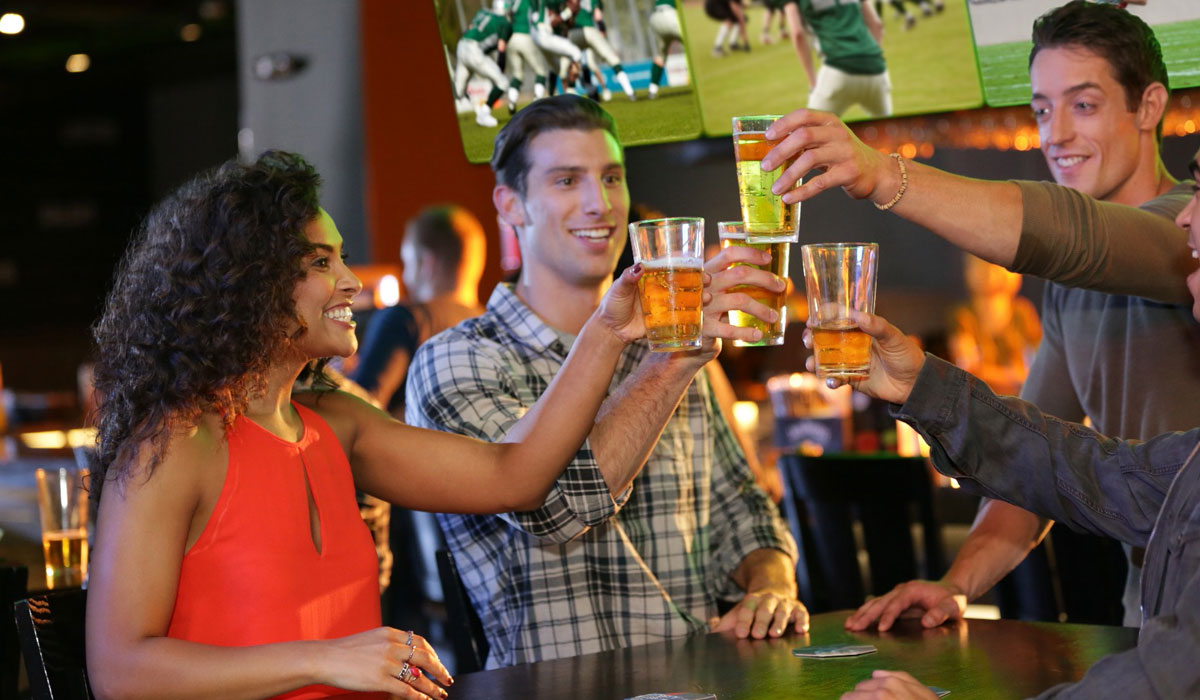Dave & Busters announced April 1 that it was forced to temporarily close all 137 locations and furlough more than 15,000 employees due to the COVID-19 pandemic.
Store management and corporate staff were reduced nearly 90 percent. Compensation of the execution team was reduced by 50 percent and the board suspended their compensation for the rest of the year.
“Our entire leadership team is focused on navigating through this unprecedented environment,” CEO Brian Jenkins said during the brand’s Q4 earnings call. “While the aggressive actions we have taken are extremely difficult, we believe they are necessary for the long-term health of the company and will help position us to safely reopen our stores and emerge on the other side of this crisis.”
STAY UP TO DATE WITH OUR CORONAVIRUS LANDING PAGE
The company will not pay rent in April. It’s working with landlords and vendors to find alternative payment options. Dave & Busters is spending roughly $6.5 million per week, which includes $3.3 million in rent and occupancy expenses and $3.2 million in operating expenses and G&A.
CNBC also reported Friday that Dave & Buster’s is in talks with private-equity firms about a potential stake sale, according to people familiar with the matter.
The chain is exploring a form of investment known as PIPE, or private investment in public equity as it searches for financing options. The deal could result in a buyout firm grabbing a significant stake in Dave & Buster’s, CNBC said.
The company noted in its quarterly review it was in discussions with lenders and “outside debt and equity providers” to amend its credit facility and “supplement its liquidity.” In January, Dave & Buster’s said private-equity firm KKR & Co. took a 6.3 percent holding.
Dave & Busters and other eatertainment brands have faced especially difficult challenges during the pandemic because of their operating structure. Customers come to the stores—in large social groups—primarily for the games, not food and beverage. The brands are more of an experiential destination, meaning customers use discretionary income. That’s why they’re typically low-frequency venues. Jenkins said earlier in the year average Dave & Buster’s guests visit the brand less than twice a year.
So, with government-mandated shutdowns of dining rooms and social distancing guidelines, the brands have lost their core element of differentiation.
At Dave & Buster’s, for example, amusement offerings totaled 60 percent of total revenues in Q3, up 9.4 percent year-over-year.
Arcades typically account for 10,000 square feet of Dave & Buster’s boxes, which range 25,000–30,000 total on the high end. There are smaller 17,000-square feet locations, but they feature the same-size arcade generally.
Pinstripes, a 13-unit brand serving Italian-American food and offering bowling and bocce, closed each of its doors. Punch Bowl Social, purchased by Cracker Barrel last summer, closed all of its locations as the casual operator decided to pull out funding.
However, a couple of the eatertainment brands have tried to maintain relevance amid the crisis. Chuck E. Cheese is offering carryout and delivery while Main Event started a pilot program in Plano, Texas, where it’s delivering food and games to customers.
Jenkins said Dave & Busters began seeing the effects of the pandemic during the week of March 9, in which 15 percent of its stores closed. By March 20, all 137 units had closed.
Capital spending was reduced 70 percent to $65 million; $55 million of that total has already been spent. The brand suspended construction on 14 new stores and capital spending on initiatives, remodels, and games and maintenance.
As of March 31, Dave & Busters has $100 million in cash on hand. The company is suspending its quarterly cash dividend, which is expected to save $5 million each quarter.
“We continue to closely monitor this fluid situation while complying with all federal, state, and local health and safety guidelines, as well as government mandates,” Jenkins said. “The primary objectives of our comprehensive response to this unprecedented challenge are to position us to emerge on the other side even stronger than before, and to welcome our valued team members and guests back as soon as circumstances enable us to safely reopen.”
In the brand’s Q4, which ended a month before the pandemic, comp sales dropped 4.7 percent. Amusement and other dipped 4.1 percent and food and beverage sank 5.5 percent. Within food and beverage, food dropped 5.9 percent and bar business lowered 4.8 percent. Walk-in sales slid 5.5 percent while special event sales saw a minor increase.
Net income dropped year over year in Q4 from $29.4 million to $25 million, or $0.80 per share. Revenue increased 4.6 percent year-over-year to $347.2 million, driven by a 5.6-percent increase in amusements and other revenue and a 3.5-percent increase in food and beverage revenue.
In 2019 overall, same-store sales dropped 2.6 percent and net income lowered from $117 million to $100.3 million, or $2.93 per share. Walk-in sales decreased by 3 percent. Amusement and other lowered 1.6 percent and food and beverage slipped 4.1 percent. Total revenue increased 7.1 percent to $1.4 million, driven by an 8.5-percent increase in amusements and other revenue and a 5.1-percent increase in food and beverage revenue.





